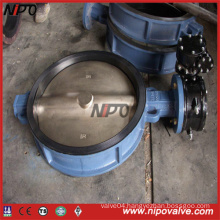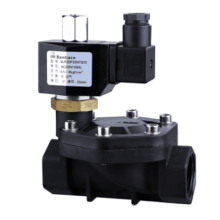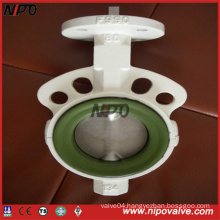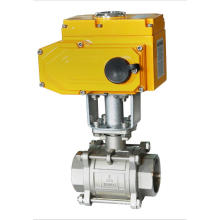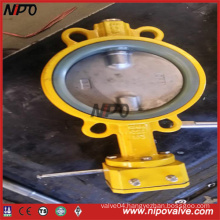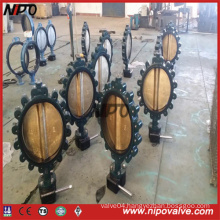The Type Selection and Application of "Fly Ash / Bottom Slag Island" Level Measurement Sensor in Large Thermal Power Plant
2021-05-02
1 Overview With the development of automatic control of high-tech, continuous level measurement sensors have been widely used in power plants, petrochemicals, oil fields and other industrial fields. The measurement of the liquid (liquid) level of solid particles, ash and mud mixtures, especially non-contact continuous measurement, has always been a difficult problem in level measurement techniques. It is applied to the "fly ash / bottom slag island" ash storage and dewatering storage in thermal power plants. The problem of bit detection is even more pronounced. It always has the problems of large viscosity, high temperature, and low dielectric constant. How to rationally design a new level measurement sensor that is suitable for power plant ash storage and dewatering storage has become the key. Level measurement sensors measure the potential energy of different media. It has an important position in the PLC/DCS system interface.
2 Classification and principle of the level measurement sensor The level measurement sensor can be divided into: a sensor that measures the continuous change of the material level and a switch-type sensor that measures the state as a target. Continuous measurement sensor is mainly used for continuous control of the silo, ash, etc., can also be used for multi-point alarm system; switch-type level measurement sensor is mainly used for sequential control limit, alarm and so on. The following describes the basic principles of the three types of continuous level measurement sensors, PLC/DCS interface and application technology.
2.1 Radar Measurement Principle Radar measurement application "emission - reflect - receive" measurement principle. The antenna of the radar sensor emits a minimum radar signal of 5.8 GHz in the form of a beam, and the reflected echo signal is still received by the antenna. The operating time of the radar pulse signal from transmitting to receiving is proportional to the distance from the measuring sensor to the medium surface and the material level. .
A radar pulse has a transmission time of 1 ns and a pulse signal is transmitted every 277 ns of the antenna system. The frequency of the pulsed beam is 3.6 MHz and the antenna system is used as a receiving device during the transmission interval. The sensor analyzes the echo signal of the running time (10-9s) and analyzes and processes the echo pattern in a very short time.
2.2 Phase Tracking Measurement Principle The phase tracking principle uses a high frequency transmission line as a probe. The probe consists of two parallel wires suspended vertically in the tank. The electronic component sends a high-frequency sine wave along the measuring sensor. This sine wave generates an electromagnetic field. The electromagnetic field moves around two wires at the same time. This signal moves toward the material surface at a constant speed, reaches the material surface, the signal is reflected and moves back at the same speed. The signal is reflected back from the material surface because the impedance of the measurement sensor has abruptly changed at the air-material interface. Because the electromagnetic field extends to the outside of the two wires of the measurement sensor, the impedance of the probe depends on the dielectric constant c of the surrounding medium.
2.3 Principle of ultrasonic measurement It is a kind of non-contact level measurement sensor. The principle is to emit a beam of ultrasonic wave to the surface of the liquid or powder surface. After being reflected by it, the measurement sensor receives this reflected wave again. Let the sound speed be certain, and the distance from the measuring sensor to the liquid surface (powder surface) can be calculated according to the time of the sound wave travel, that is, the position of the liquid surface (powder surface) is measured. There are two kinds of sensing elements, one is composed of coils, magnets, and a film, and the other is composed of piezoelectric magnetostrictive materials. The former generates 10 kHz ultrasonic waves, and the latter generates 20 to 40 kHz ultrasonic waves. The lower the frequency of the ultrasonic wave, the smaller the distance attenuation, but the reflection efficiency is also small.
In general, in air (or vacuum), the dielectric constant is equal to 1, and in all materials, the dielectric constant is always greater than 1. Therefore, on the air-material interface, an echo will always be generated due to the difference in dielectric constant. The difference of the minimum dielectric constant is about 0.5, that is, the minimum dielectric constant of the material is about 1.5.
3 Functional characteristics of three new continuous level measurement sensors, analysis and comparison of PLC interface technology 3.1 Functional analysis of radar measurement sensors and PLC interface 3.1.1 Functional characteristics The radar sensor continuously and non-contactly measures the distance from the sensor probe to the media surface. Different distances correspond to different levels. Apply special “adjust interval time” technology to amplify and position 3600000/s echo maps, then integrate and judge them separately, and accurately analyze and process these amplified echo signals every 0.1s, saving analysis time. . Radar signal is a special form of electromagnetic wave whose physical characteristics are similar to those of visible light. According to quantum theory, radar signals can penetrate space and travel at the speed of light.
Whether the radar signal can be reflected depends on two factors: the conductivity of the measured medium; the dielectric constant of the measured medium; all conductive media can reflect the radar signal well, although the conductivity of the medium is not very good. It can also be measured very accurately.
Radar measurement sensors can measure all media with a dielectric constant of >1.5 (air has a dielectric constant of 1). The better the conductivity of the medium or the greater the dielectric constant, the better the reflection effect of the echo signal.
3.1.2 Analysis and Processing (1) The intelligent automatic radar measurement sensor adopts advanced electronic components and has high measurement efficiency. It can detect radar signal operation time shorter than 10-9s. It applies multi-year level and radar measurement technology to intelligent signal analysis and processing.
Its parameters can be adjusted and stored in a memory. A database is built in to support this memory, and the database contains empirical parameters for radar level measurements. Similar to human memory, the database's memory is long-term memory, historical memory is equivalent to short-term memory, and the radar signal's image is equivalent to instantaneous memory.
(2) Calculation Probability ECHOFOX calculates and judges consecutively and quickly according to the method of calculating probability (fuzzy logic), which echo maps are correct, and the level is reissued every 0.1s. Based on the data of the two databases and the actual echo pattern, the measurement sensor makes a decision in a very short time. The measuring sensor marked ECHOFOX can distinguish useful echoes and false echoes based on empirical parameters and filter out false echoes.
3.1.3 Interface between output signal and PLC It is very important to measure the signal output and transmission of the sensor. There are two outputs:
(1) 0/4 to 20mA analog signal proportional to the level The 0/4 to 20mA analog signal is a universal standard signal. Suitable for designing single point analog measurement or PLC/DCS systems.
(2) Digital signal proportional to the measured value Digital signal transmission is suitable for large-scale measurement systems. Sensors with digital output can be connected to any network. A 5-wire sensor (digital output) can be connected to a 2-wire cable.
Digital output is characterized by high measurement accuracy and small error.
3.1.4 Applications The radar type measurement sensor is free from the limitations and influences of temperature, pressure, gas and other conditions, and can contactlessly and accurately measure the level of different media. It can be applied to various conditions such as dust, solid particles, and high temperature. Safe and energy saving. In practical applications, the transmitting power of the radar material level is very small, and the radar signal can be completely isolated through the outer wall of the metal container.
3.2 Functional Analysis of Phase Tracking Measurement Sensor and PLC Interface 3.2.1 Functional Characteristics The phase tracking method measures the material level by measuring the phase angle between the RF (Radio Frequency) RF wave and the reflected echo from the material surface. The RF waves propagate in a transmission line (ie, a sensing element) suspended vertically within the bin. The phase shift between the sending RF wave and the reflected wave is that the RF wave moves along the transmission line toward the material plane, and then returns to the top and directly measures the distance traveled. The measurement method depends on the nature of the material and is independent of the dielectric constant. Because the RF wave propagation does not change with pressure and temperature conditions, the material reading will remain stable at room temperature and pressure. In granular and powdery materials, this method of measurement is not affected by dust in the charging process, air disturbance in pneumatic conveying, and the influence of dust in the tank on its detection is also small. When measuring a liquid, it is not affected by the type of liquid, the specific gravity, the dielectric constant, and the effect of the liquid on the probe.
3.2.2 Analysis and processing The measurement process of the silo has nothing to do with the nature of the material. This is a major breakthrough in solving the difficulties in material measurement for many years. Because of the phase tracking principle, it measures the height of the space above the material, not the material itself, so it has nothing to do with the material. The result of the level measurement does not depend on the physical properties of the capacitance or conductivity within the silo; the change in dielectric constant only changes the amplitude of the reflected signal (Rx) without changing the phase between Tx and Rx. Therefore, this measurement principle can be used to operate under the condition that the dielectric constant changes. In addition, because of the dust-laden air and the material adhering to the probe, the space occupied by them is insignificant compared with the measurement space around the probe, so the dust during the charging process and the dielectric constant caused by the temperature change Changes in the structure of the silo, such as height, diameter, etc., in the measurement of solids do not affect the measurement accuracy of the phase tracking method. The detection characteristic of the RF wave itself determines that the phase tracking level detection sensor can be unaffected by temperature changes in the tank and the material being stirred.
3.2.3 Interface between output signal and PLC H=Ho-L=Ho-[V/(2△f)]
In the formula:
H is the height of the material level in the silo;
Ho is the total height of the silo (probe length);
L is the distance from the top of the probe to the material surface;
V is speed;
Δf is the frequency difference between f2 and f1.
Because V is a fixed value, on-site calibration is not required. An intelligent sensor is used to control the frequency sweep process and the frequency (f2, f1) is measured, and the material height H in the hopper is automatically calculated.
Intelligent measurement algorithm uses self-checking technology; PCBUS diagnostic software for RS232C data port communication, providing local instructions, control contacts, 4 ~ 20mA output and 2 serial data devices, can branch for RS232/RS485 use.
3.2.4 The application does not require compensation for temperature and pressure. Because radio frequency waves can be transmitted at a fixed speed in vacuum and air, it is not affected by temperature, pressure, and dust. Phase tracking requires very little energy and its nature is safe.
3.3 Ultrasonic tracking measurement sensor function analysis and PLC interface 3.3.1 Functional characteristics The non-contact Ultrasonic Level measurement system consists of two parts: an ultrasonic signal transducer and a remotely mounted electronic transmitter. The transducer continuously emits a series of ultrasonic pulses and receives reflected echoes returned from the liquid or solid surface being monitored. The microprocessor in the transmitter converts the signal to distance, level, or volume, and displays the data as an LCD digital readout.
Ultrasonic transducers feature built-in temperature compensation and high output to increase self-cleaning capability. Dynamic impedance matching (perfect transmission/reception matching) that enhances transducer sensitivity is used to maximize the amplitude of the echo.
Under ideal conditions, monitoring the liquid or fill level in a container, receiving a single strong echo from the reflective surface is a simple process. However, in practical applications, many factors such as disturbances, dust and echoes from false target phantoms, bubbles, steam, and acoustic attenuation effects due to distances complicate measurement conditions, which is part of the limitations of system measurement capabilities. . Today's Sonic SmartTM echo processing software, coupled with new transducers, can make up for previous applications where ultrasonic sensors cannot.
3.3.2 Analytical processing (1) Electronic unit hub, Sonic IntelligenceTM software enables AiRanger DPL Plus and XPL Plus to have a unique echo envelope digitization to distinguish between “true” echoes reflected by solid or liquid surfaces and obstacles by containers and False echoes due to acoustic or electrical noise.
(2) Artificial intelligence. In order to adapt to changes in working conditions, software that uses high reliability to process the original echo envelope is used. The software uses special techniques such as curve forming, statistical analysis, echo reconstruction, and digital filters to eliminate the effects of electrical interference and narrow echoes. As the echo envelope is continuously stored and refreshed, the averaging of the envelope reduces the effect of random acoustic reflections. Recognizes and rejects phantoms from vessel obstructions, echo shape of welds, rise time of electrical spikes, random acoustic wave reflections from stirrer blades, and reconstructs crushing echoes due to vibration and uneven surfaces to ensure harsh environments The stable measurement below.
3.3.3 Output signal interface with PLC (1) Pre-setting and fine-tuning The DPL Plus and XPL Plus systems have been pre-set before delivery to meet the requirements of various solid and liquid applications. They are selected on-site according to the actual solid or liquid, and Enter the container size and the control unit can be started and run.
(2) Programming simply using the quick start software can further fine-tune the specific process. Select the required engineering units (%, ftm, etc.) to quickly display the level, space, distance, or volume to adjust the tracking speed of any level changes in the tank. The programming values can be observed during setup and operation without having to query the switching process or switching between different display modes. The BICll option provides the same connection between the two control units to the host, PLC/DCS system.
3.3.4 Application The ultrasonic transducer is welded and sealed in the housing of the Kynar material. Different applications are selected for different applications. The rated temperature range is -40 to 150°C (-40 to 302'F) and the measurement distance is 10m (33 ft) to 60m (200 ft). The test material uses fly ash as an example. The selected temperature range is -40 to 95°C (-40 to 203'F) and the measurement distance is 10m (33 ft) to 40m (130 ft). Can meet the harsh field work environment. And get the maximum sound power output in high temperature, humidity and dust.
4 Basic Principles for Selection and Design Application (1) Application conditions Suitable for measuring the level of liquids or solids and the distance to the measured medium. The emission energy is very small and does not affect the safety of the human body. It can be measured under vacuum conditions and all the measurements can be made. Electric constant >1.5 medium.
(2) measurement accuracy Measurement resolution <1mm, range ≥ 0 ~ 35m, accuracy <0.1%, no temperature and time drift; material stability, accurate measurement.
(3)Adaptability is not affected by noise, steam, dust, mixed gas and gas interlayer, not affected by medium density and temperature; non-contact measurement, wear-resistant working pressure ≥64bar, medium temperature exceeding 1000°C; firm Durable, chemical resistant.
(4) Functional integrity 1) Two-wire technology: 0/4 to 20mA output or digital output share the same two-core cable;
2) Any networking, 15 sensors (digital output) can be connected to a two-core cable
3) It can connect any BUS system that conforms to the standard protocol communication port;
4) The measurement sensor can have an integral display and can be displayed separately.
(5) Maintenance is simple, maintenance-free, power supply is reasonable, and debugging is convenient.
5 Application Example 5.1 Ash Level Measurement The ash library is the last area of the temporary fly ash. There are some factors such as high temperature, humidity, dust adhesion and so on in the soil structure. Monitoring the change of the ash library ash level can help the normal delivery of the whole fly ash system. The correctness of the ash level measurement is one of the key conditions that are linked to the ash control system. Most of the original traditional gray level measurement sensors are equipped with heavy hammer type and capacitive type, and their accuracy and output signals can meet the requirements of PLC standard interfaces. However, the practical application is limited by certain conditions, and in particular, it is not suitable for the detection of a closed ash store, and the phenomenon of broken hammers and buried hammers often occurs.
The author once participated in the technical transformation of the 1#/2# furnace fine ash storage level measurement sensor in the 4x300MW power plant, and replaced the RF admittance measurement with the original weight measurement. According to reports, its probe is made of TWFLE material, which can not be affected by the adhesion of dust in the ash library. It also has the advantages of easy disassembly and installation, flexible installation (that is, the secondary instrument is bad, does not affect the probe). After a period of trials proved to be unsatisfactory, the data drifted severely, and even "dead" data appeared on the display. After the use of phase tracking measurement and radar-type measurement sensors in the 3#/4# furnace coarse and fine ash storage, the ideal results were obtained. Ash library gray level measurement AirlineSPL-519 single point anti-dust ultrasonic measurement sensor selected by MILLTRONICSDE, measuring range is about 15m, the use of good results.
5.2 Dewatering silo measurement The dewatering silo is an open container with a mixture of water slag (slurry). The previous design only consisted of a simple measurement of the liquid level change in the chamber. The output signal did not participate in the system interlock. Therefore, this measuring device only served as an alarm. Most of the sensors used heavy level material level measurement sensors and the application effect was not satisfactory. . What actually needs to be measured is the change in the slag level (gray water mixture), and now Sensall 4901 SL sludge/fork tuning fork control is used instead.
The sensor probe is a stainless steel structure and airtight "C" sensor. The sensor contains two ultrasonic transducers that are separated from one another at a specified interval to form the transmission and reception of the ultrasound system. When the transmitted ultrasonic signal passes through the suspension containing solid and liquid phases, it is attenuated to a greater degree than through clear water. The amplitude of the ultrasonic signal increases and decreases, activates the relay action, outputs a signal, and activates external equipment (dewatering bin drain gate). ) Actions, with the PLC constitute a complete closed-loop control, can basically meet the process requirements.
6 Concluding remarks The design of the “fly ash/bottom slag island” level measurement sensor is a new topic for automatic thermal control. The author has participated in the construction and overhaul of the “fly ash slag slag island” in large-scale thermal power plants for many years. The "type of fly ash / bottom slag island" level measurement sensor design proposed three constructive comments:
(1) Satisfy the process requirements and adapt to the working conditions on site;
(2) output standard signal, interface control is simple;
(3) Strong anti-interference ability and easy maintenance.
Combining the working conditions applied at the production site of a power plant and comprehensively improving the detection level of the level measurement sensor is an inevitable condition for successful clean power generation and safe power generation practices.
JRT produced the high resolution optical distance measurement sensor for 16 years with lower cost. Our distance measuring sensor have small size, high accuracy.
The laser range finder components is characterized by an above-average measured value output frequency, up to 8hz. The miniature laser distance module is also suitable for monitoring defined distance and height during transport.
Distance Measuring Sensor, Accurate Laser Measuring Sensor, High Accuracy Distance Sensor, Optical Distance Sensors
Metery Technology Co., Ltd. http://www.irdistancesensor.com
